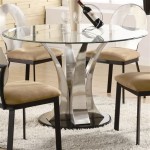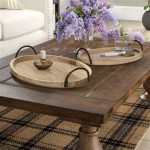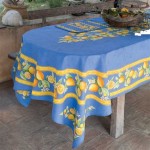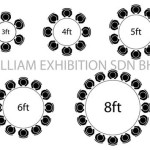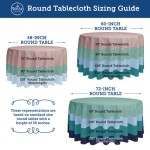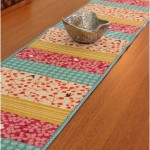How Long Is A Table For 8?
Determining the appropriate length of a table designed to comfortably seat eight people is not a straightforward calculation. Numerous factors influence the ideal dimensions, including the shape of the table, the size of the chairs, the desired amount of personal space for each diner, and the potential need for serving dishes in the center. Therefore, a range of measurements is generally considered acceptable, and careful consideration of these factors is crucial when selecting or designing a table.
This article will explore the various considerations that impact the required length for an eight-person table, providing guidelines and recommendations to ensure diners enjoy a comfortable and aesthetically pleasing dining experience. We will delve into different table shapes and their corresponding length requirements, discuss the influence of chair size, and examine how to allocate sufficient space for both diners and serving dishes.
Table Shape and Length Requirements
The shape of a table significantly dictates the necessary length to accommodate eight individuals comfortably. While rectangular tables are perhaps the most common choice, round, square, and oval tables offer alternative seating arrangements, each requiring different length or diameter considerations.
A rectangular table is characteristically long and narrow. To comfortably seat eight people, with three on each long side and one at each end, a rectangular table generally needs to be at least 8 feet (96 inches) long. This provides approximately 24 inches of space per person along the sides, which is considered a minimum for comfortable dining. However, if more elbow room or serving space is desired, a length of 9 to 10 feet (108 to 120 inches) is recommended. The width of the table should also be considered; a width of at least 36 inches is necessary to accommodate place settings and serving dishes in the center. A wider table, around 42-48 inches, allows for more generous centerpieces or serving arrangements.
Round tables offer a more intimate dining experience, encouraging conversation and a sense of connection among diners. To seat eight people comfortably around a round table, the diameter should be at least 60 inches. This allows for approximately 23.5 inches of space per person around the circumference. However, like rectangular tables, a larger diameter is generally preferred. A diameter of 66 to 72 inches provides more personal space and accommodates larger place settings. The primary drawback of round tables for larger groups is the distance between diners seated opposite each other, which can sometimes hinder conversation.
Square tables, while less common for seating eight, can provide a visually striking and balanced aesthetic. A square table designed for eight people, with two on each side, should ideally measure at least 60 inches on each side. Similar to round tables, this provides approximately 23.5 inches of space per person. A larger square table, measuring 66 to 72 inches per side, offers more generous seating and allows for more elaborate centerpieces. However, larger square tables can make it difficult for diners seated on opposite sides to reach serving dishes in the center.
Oval tables combine the elegance of a round table with the practicality of a rectangular table. They offer a continuous surface for serving dishes while still providing a sense of intimacy. The length requirements for an oval table are similar to those of a rectangular table. To seat eight people comfortably, an oval table should be at least 8 feet (96 inches) long. As with rectangular tables, a length of 9 to 10 feet (108 to 120 inches) is recommended for more elbow room. The width of the oval table should also be considered, with a minimum of 36 inches and a preferred width of 42-48 inches.
Ultimately, the choice of table shape depends on personal preference and the overall design aesthetic of the dining space. However, understanding the length requirements associated with each shape is crucial for ensuring a comfortable and functional dining experience for all guests.
The Impact of Chair Size on Table Length
The size of the chairs used at a table directly influences the amount of space required per diner. Chairs with arms, for example, typically require more lateral space than armless chairs. Similarly, wider chairs naturally occupy a greater footprint, reducing the available space per person along the table's edge.
Standard dining chairs typically range in width from 18 to 22 inches. When planning table seating, it is essential to account for this width, as it impacts the amount of space required to comfortably accommodate each person. A common guideline is to allocate at least 24 inches of space per diner, measured along the table’s edge. This allows for sufficient room to sit comfortably, move arms, and avoid bumping elbows with neighboring diners.
If using chairs with arms, the required space per diner may need to be increased to 26-28 inches. This ensures that diners have adequate room to sit comfortably without feeling cramped or restricted. Carefully measuring the width of each chair, including the arms, is crucial to accurately determine the total length required for the table.
Beyond the width of the chair, the depth of the chair should also be considered. Chairs with deeper seats may require more space between the table and the wall or other furniture in the room. This is particularly important in smaller dining spaces where every inch counts. Therefore, when selecting chairs, it is essential to consider both their width and depth to ensure they fit comfortably within the available space and complement the overall table design.
Furthermore, the style of the chair can also influence the perceived comfort and spaciousness of the dining arrangement. Chairs with open backs or lighter frames tend to feel less bulky and intrusive than chairs with solid backs and heavier frames. This is particularly relevant for smaller dining spaces where visual clutter can make the room feel cramped. Choosing chairs with a lighter aesthetic can help to create a more open and airy dining atmosphere.
By carefully considering the size and style of the chairs used, it is possible to optimize the seating arrangement and ensure that diners have a comfortable and enjoyable dining experience. This involves accurately measuring the chairs, allocating sufficient space per diner, and choosing chairs that complement the overall table design and the available space.
Considering Space for Serving Dishes and Centerpieces
Beyond the individual needs of each diner, the presence of serving dishes and centerpieces also significantly impacts the required table length. Adequate space must be allocated in the center of the table to accommodate these items without crowding diners or hindering their access to the food.
When planning a dining arrangement, it is crucial to consider the typical number and size of serving dishes that will be placed on the table. For a formal dinner, multiple serving dishes may be required, including platters, bowls, and tureens. In contrast, for a more casual meal, fewer serving dishes may be necessary. Regardless of the specific meal, it is essential to allocate sufficient space in the center of the table to accommodate these items without overcrowding the space or preventing diners from easily reaching the food.
As a general guideline, it is recommended to reserve at least 12 to 18 inches in the center of the table for serving dishes. This allows for a reasonable amount of space to arrange the dishes without encroaching on the diners' personal space. If serving a large number of dishes, or if using particularly large platters or bowls, it may be necessary to allocate even more space in the center of the table.
In addition to serving dishes, centerpieces can also occupy a significant amount of space in the center of the table. Centerpieces can range from simple floral arrangements to elaborate sculptures, and their size and shape can vary widely. When selecting a centerpiece, it is important to consider its overall dimensions and how it will impact the available space for serving dishes and diners. A general rule of thumb is to choose a centerpiece that is no more than one-third the width of the table. This prevents the centerpiece from overwhelming the space or obstructing the view across the table.
Furthermore, the height of the centerpiece should also be taken into consideration. A very tall centerpiece can obstruct the view across the table, making it difficult for diners to converse with each other. Conversely, a very short centerpiece may be barely noticeable and add little to the overall ambiance of the dining space. A centerpiece that is approximately 10 to 14 inches tall is generally considered to be a good compromise, allowing for visual interest without obstructing the view or feeling overly intrusive.
By carefully considering the number and size of serving dishes, as well as the dimensions and style of the centerpiece, it is possible to create a dining arrangement that is both functional and aesthetically pleasing. This involves allocating sufficient space in the center of the table to accommodate these items without crowding diners or hindering their access to the food.

8 Ft Rectangular Banquet Table For Orange County Ca On Call Event Als

8 Ft X 40inches Banquet Table King Al Wide Big Rectangular

Table Als Big Tent Events

Table Seating Capacity Contemporary Craftsman Furniture

Dining Table Size

8 Foot 30x98 Plastic Folding Long Table With Wishbone Style Legs

36 Inch Extra Wide 8 Foot Long Folding Plywood Table

8 Foot Banquet Table Customer Pick Up Inafunfactory Com

Dining Table For 6 8 Person 78 Inch Long Rectangular Kitchen Living Room And 7 X 27 5 29 Inches Only Com
8 Foot Table
Related Posts

